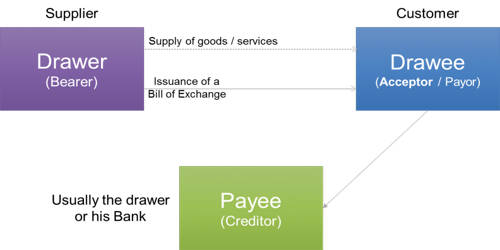Treasury management is simply the financial management of a company. It includes management of an enterprise’s holdings, with the ultimate goal of managing the firm’s liquidity and mitigating its operational, financial, and reputational risk. It covers working capital management, currency management, corporate finance, and financial risk management. Treasury Management includes a firm’s collections, disbursements, concentration, investment, and funding activities. It aims to ensure that adequate cash is available with the organization, during the outflow of funds. In larger firms, it may also include trading in bonds, currencies, financial derivatives, and the associated financial risk management. A treasury manager should be able to understand and appreciate the link between business strategy, and organization.
Most banks have whole departments devoted to treasury management and supporting their clients’ needs in this area. As part of an investment banking business, the treasury provides innovative and collaborative services that aim to better manage your company’s daily financial planning and functions. Smaller banks are increasingly launching and/or expanding their treasury management functions and offerings. It can also be useful for guarding against fraud by making use of fraud prevention products. A number of independent treasury management systems (TMS) are available, allowing enterprises to conduct treasury management internally. It is at the corporate level, where the deficits in liquidity and statutory positions of the corporate body are administered.
Treasury management services provide businesses with a number of unique benefits. For non-banking entities, the terms Treasury Management and Cash Management are sometimes used interchangeably, while, in fact, the scope of treasury management is larger. It includes investing, financials for operations, and raising funds /financing /refinancing. In general, a company’s treasury operations come under the control of the CFO, Vice-President / Director of Finance or Treasurer, and is handled on a day-to-day basis by the organization’s treasury staff, controller, or comptroller.
The key goal of treasury management is planning, organizing, and controlling cash assets to satisfy the financial objectives of the organization. One of the main functions of treasury management is to determine the proper levels of cash or cash equivalents to allow businesses the ability to meet their financial obligations. Common two functions of treasury management are discussed below:
- Cash Management: Treasury Management includes cash management, and so it ensures that there are an effective collection and payment system in the organization.
- Liquidity Management: An optimum level of liquidity should be maintained in the business, for the better and smooth functioning of the business, i.e. the company must be able to fulfill its financial obligation when they become due for payment, such as payment to suppliers, employees, creditors, etc.
Bank Treasuries may have the following departments:
- A Fixed Income or Money Market desk that is devoted to buying and selling interest-bearing securities
- Foreign exchange or “FX” desk that buys and sells currencies
- A Capital Markets or Equities desk that deals in shares listed on the stock market.
















